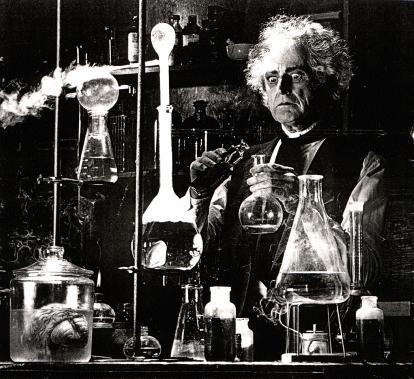 |
| looking NW, at 20:02BST |
Sunday, 30 August 2020
Sunday, 23 August 2020
Artificial glassware for artificial chemistries
Labels:
complexity,
publishing,
python,
research
Our new paper published recently:
Penelope Faulkner Rainford, Angelika Sebald, Susan Stepney.
MetaChem: An algebraic framework for Artificial Chemistries
Artificial Life Journal, 26(2):153–195, 2020
Abstract: We introduce MetaChem, a language for representing and implementing artificial chemistries. We motivate the need for modularization and standardization in representation of artificial chemistries. We describe a mathematical formalism for Static Graph MetaChem, a static-graph-based system. MetaChem supports different levels of description, and has a formal description; we illustrate these using StringCatChem, a toy artificial chemistry. We describe two existing artificial chemistries—Jordan Algebra AChem and Swarm Chemistry—in MetaChem, and demonstrate how they can be combined in several different configurations by using a MetaChem environmental link. MetaChem provides a route to standardization, reuse, and composition of artificial chemistries and their tools.
Artificial chemistries – computational systems that link together abstract ‘molecules’, inspired by the way natural chemistry operates – are fascinating ways to explore the growth of complexity, and underpin some aspects of Artificial Life research. Most AChem research focusses on designing the molecules and reactions of the artificial system.
We have been working at the level of the artificial ‘glassware’: the system whereby different molecules are brought together under different conditions.
Our new paper explains how this MetaChem system works, and how it can be used to underpin essentially any artificial chemistry – it can even use whole chemistries at one level to be the molecules at another level.
The python code is available on GitHub for anyone to use in their own AChem systems.
Wednesday, 12 August 2020
Sunday, 2 August 2020
TV review: Devs
Labels:
computer,
philosophy,
review,
San Fransisco,
science fiction,
TV
Beautiful nonsense
Lily Chan and her boyfriend Sergei Pavlov are software developers at the high tech Amaya company in San Francisco. Sergei is reassigned to the secretive Devs project, disappears, and then security video of his suicide turns up. Lily is initially distraught, but then suspicious. She starts to investigate, and discovers the Sergei was murdered when he tried to steal Devs code. Her own life is at risk as she works to discover what the Devs project is actually trying to do.
The whole premise is bonkers. SPOILER: the Devs team are developing quantum computer code that can retrodict the past from the current state of the world. (It can also predict the future, but the team are forbidden to use it to do that. Yeah, right.) My first snort of derision was when Sergei asks how big the quantum computer is, and Forest answers “a number that it is meaningless to state”, while they are looking at a machine that has about 50 qubits in the real world.
At one point we see a crystal clear rendition of an episode from tens of thousands of years in the past. This is, of course, all impossible, for so many technical reasons. At another point one of the team asks Lily to name something that in not determined by something earlier: everything she says is refuted. The one thing she doesn’t suggest is Schrödinger’s cat, or some other quantum process. (And even if we ignore quantum mechanics, the very technology central to the plot, we know that chaos means that even a deterministic system can’t necessarily be predicted, or retrodicted, because of sensitive dependence on initial conditions. Okay, I’ll stop the dynamical systems lecture now…)
Also, everyone works on the assumption that the computer’s predictions of the future (because, yes, of course they do use it for that) are inevitable. There’s a scene where the predictions are running a couple of seconds ahead of a group of people watching the prediction; no-one even tries to do something different. Lily, apparently, is the only person who can do something different from the prediction. It all ends nonsensically in a computer simulation.
So why do I say it is “worth watching”? Because the slow calm pace (even of a couple of murders!), the beautifully shot soft, rich, misty San Francisco, the amazing soundtrack, all add up (even with occasional shouting at the screen) to a dreamily beautiful experience.
Even if the premise is bonkers.
For all my SF TV reviews, see my main website.
Subscribe to:
Posts (Atom)


